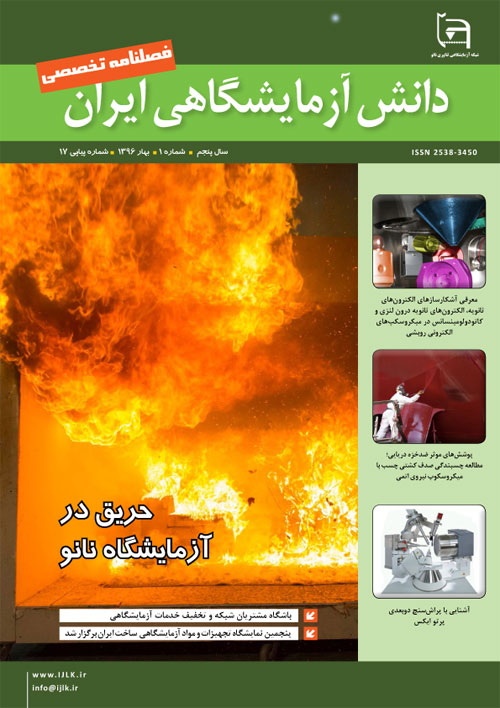فهرست مطالب

مجله دانش آزمایشگاهی ایران
سال پنجم شماره 1 (پیاپی 17، بهار 1396)
- 44 صفحه،
- تاریخ انتشار: 1396/03/22
- تعداد عناوین: 6
- اخبار
- استاندارد
- مقالات
-
پوشش های موثر ضدخزه دریایی / مطالعه چسبندگی صدف کشتی چسب با میکروسکوپ نیروی اتمیصفحه 25
-
صفحه 33
-
Page 7
The basis of scanning electron microscope, as its name implies, is based on scanning the sample surface by an electron beam. The area of the sample which the primary electron beam interact, is named as interaction volume. Because of the variety and multiplicity of the electron impacts, there are many complications to investigate how the size of interaction volume will change. In order to investigate the properties and specifications of the material by means of imaging, elemental analysis and chemical compositions, the possibility of detecting emitted beams of material caused by its interaction with primary electrons is at a high level of importance. Together with the development and progress of electron microscopes, different varieties of detectors are designed in order to identify the properties of the material. In this article three types of most important detectors of scanning electron microscopes, will be investigated. Secondary electron detector, in beam secondary detector and Cathodoluminescence detector will be studied in this article.
Keywords: Scanning Electron Microscope, In BeamDetectore, Secondary Electron, BackscateredElectron, Cathodoluminescence -
Page 16
Two-dimensional X-ray diffraction is a new technique in the field of XRD analysis which is not simply a diffractometer with a two-dimensional detector. The 2D diffraction pattern contains far more information than the conventional diffraction pattern for applications, such as: Phase ID; Percent Crystallinity; Particle Size and Shape; Texture; and Stress. Because of the unique nature of data collected with a 2D detector, a completely new concept and new approach are necessary to configure the XRD2 system and to understand and analyze the 2D diffraction data. This paper covers the fundamentals about its principles, geometry, instrument configuration, applications and its advantages over conventional XRD.
Keywords: XRD, Two Dimensional X-Ray Diffraction -
Page 33
Concerning the nature of the work, fire in Nano labs is different from other types of fire, especially in the field of combustible materials. In fact, because of the existence of different types of high combustible chemicals in Nano labs, the potential of firing is high. Meanwhile in other labs, because of larger particles, it is less likely. Negligence about working with chemicals in Nano labs and the lack of personnel awareness in this field can cause explosion or widespread fires, therefore very serious damages will be made for the personnel, the constructions of laboratories and the equipment.
Keywords: Nano lab, Fire, nanoparticles


